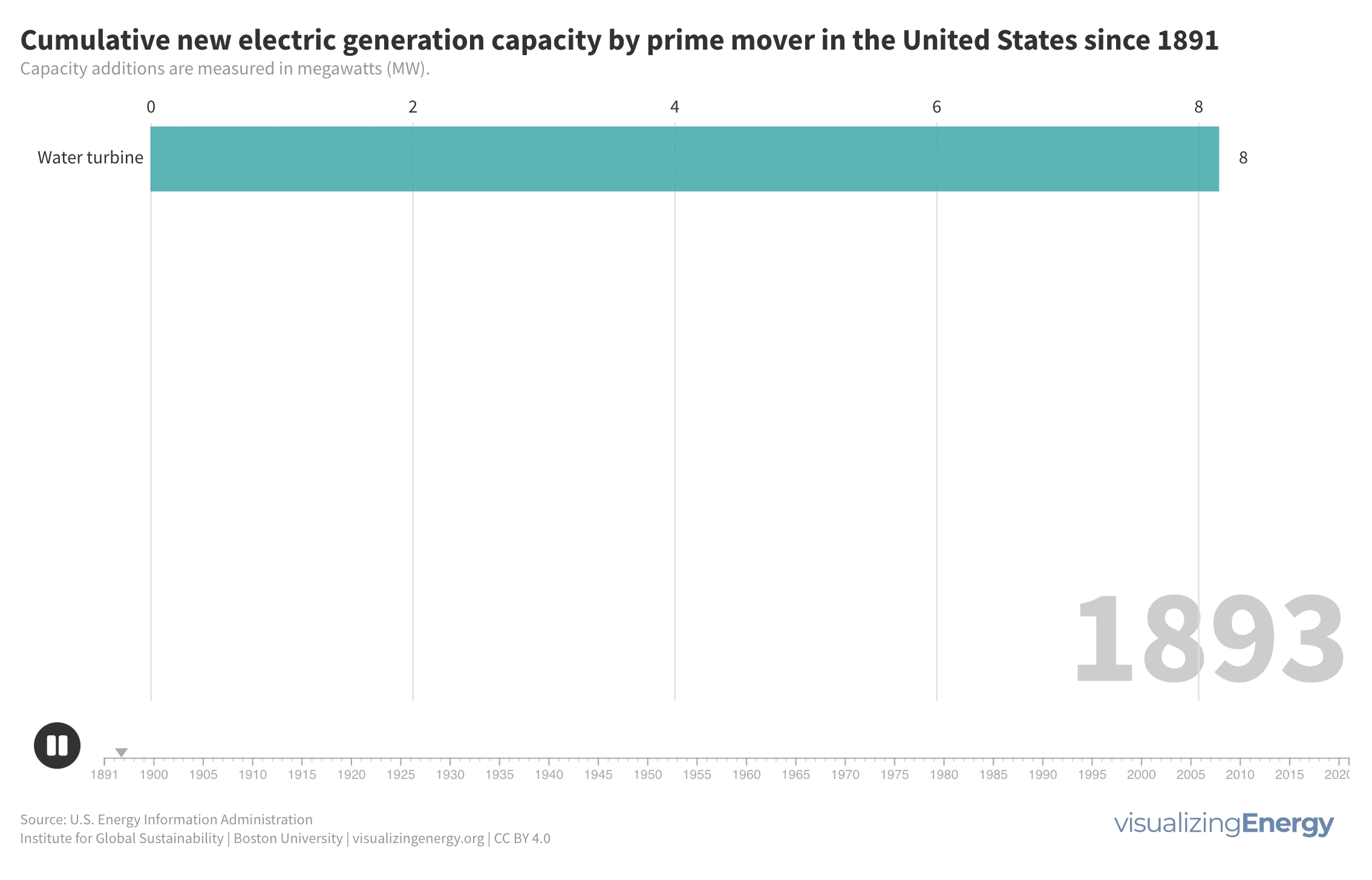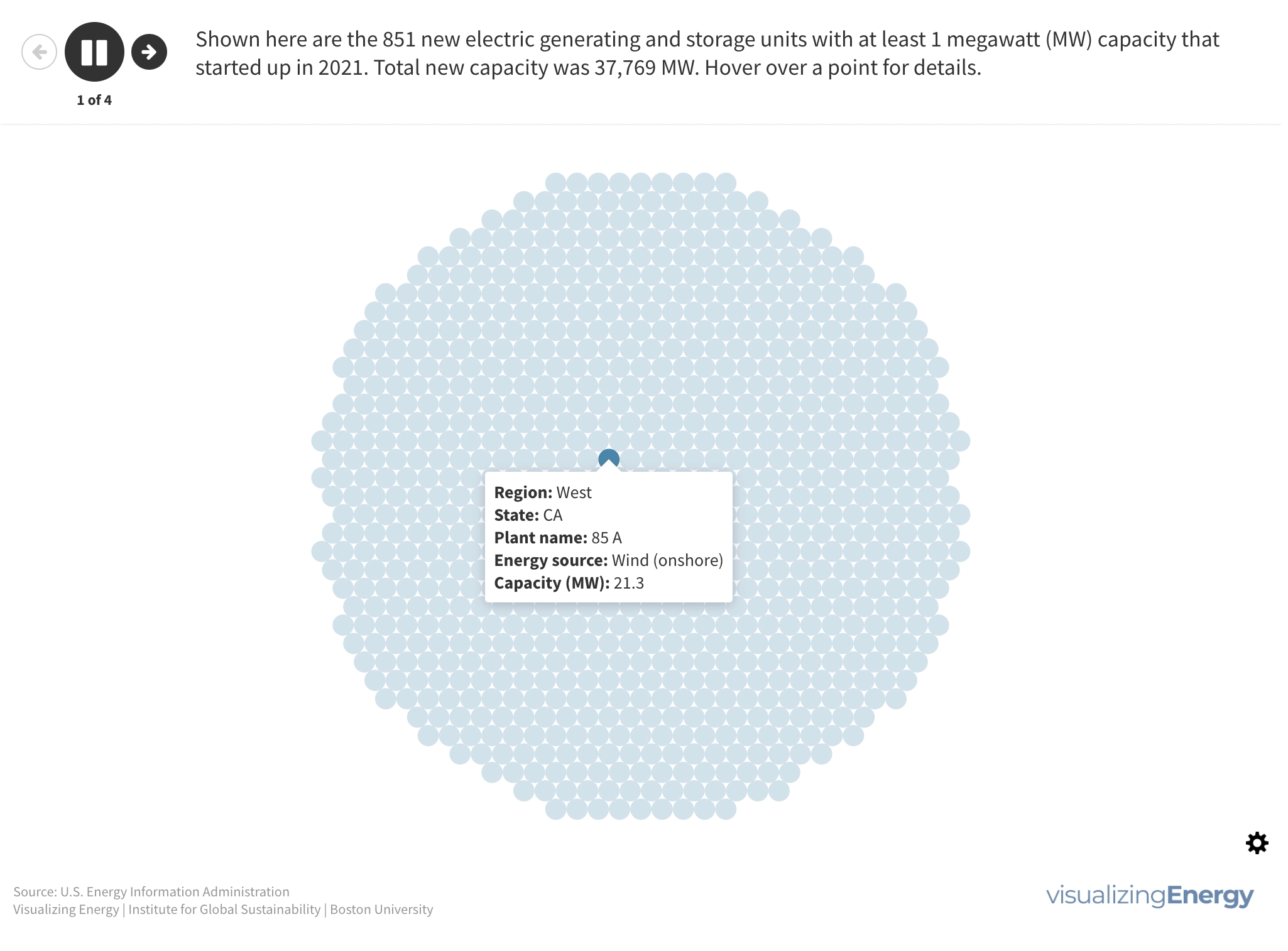What prime movers have generated the most electricity since 1900?

Prime movers are devices that convert natural sources of energy into mechanical energy to generate electricity. Historically, hydropower from water turbines and steam turbines played major roles. Gas turbines emerged as a more efficient and cost-effective option. In recent years, solar cells and wind turbines have made significant advancements, providing competitive and environmentally friendly alternatives to traditional energy sources.
Explore the geography and technology of new electricity generation in the United States in 2021

In 2021, the United States saw the addition of 851 new electric generating and storage units with at least 1 MW capacity, totaling 37,769 MW of new capacity. Wind and solar accounted for 79% of this new capacity, followed by natural gas (11%) and storage (9%).
Explore world wind power capacity added in 2020

In 2020, 938 new global wind projects added 75,812 MW, with the largest being the 1200 MW Hornsea offshore wind farm. Over 90% of new capacity came from onshore wind farms (76 MW average), while offshore farms averaged 283 MW.
United States electricity history in four charts

Electricity in the United States has seen remarkable growth, with a significant shift from coal to renewable energy sources. Government policies and technological advancements have played a crucial role in shaping the energy landscape. President Biden’s goal of achieving 100% carbon-free electricity by 2035 highlights the need for continued progress in policy, technology, and public perception.
What types of energy support Boston and the New England Grid?

Boston relies on fossil fuels for over 70% of its energy needs, with natural gas and refined oil being the dominant sources. To achieve carbon neutrality by 2050, Boston is increasingly focusing on low-carbon energy sources such as nuclear power, hydropower, wind, and solar energy.
